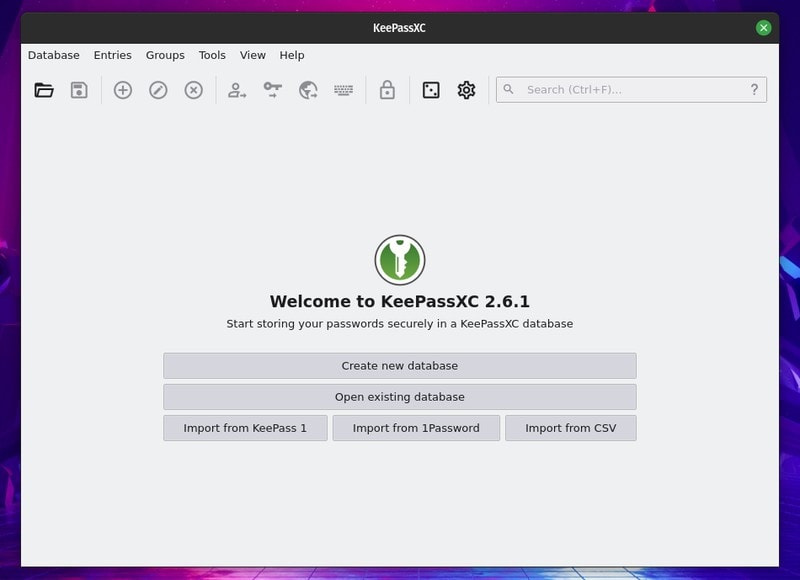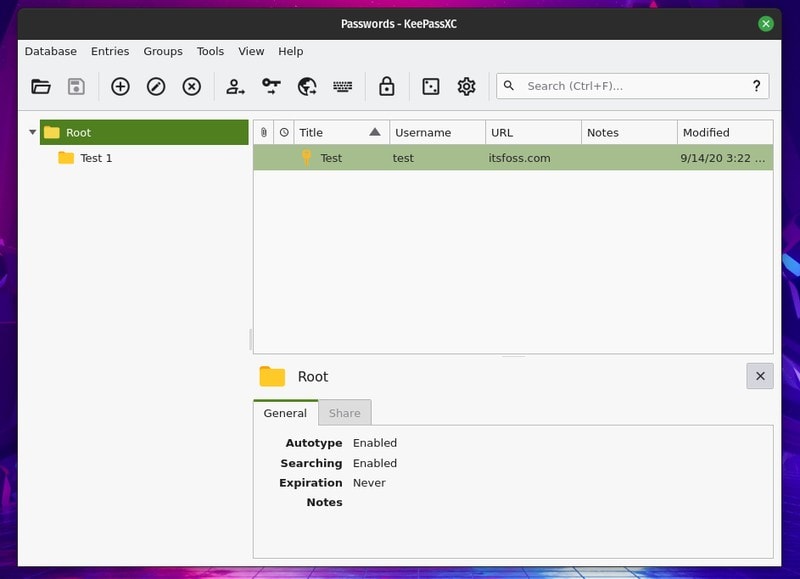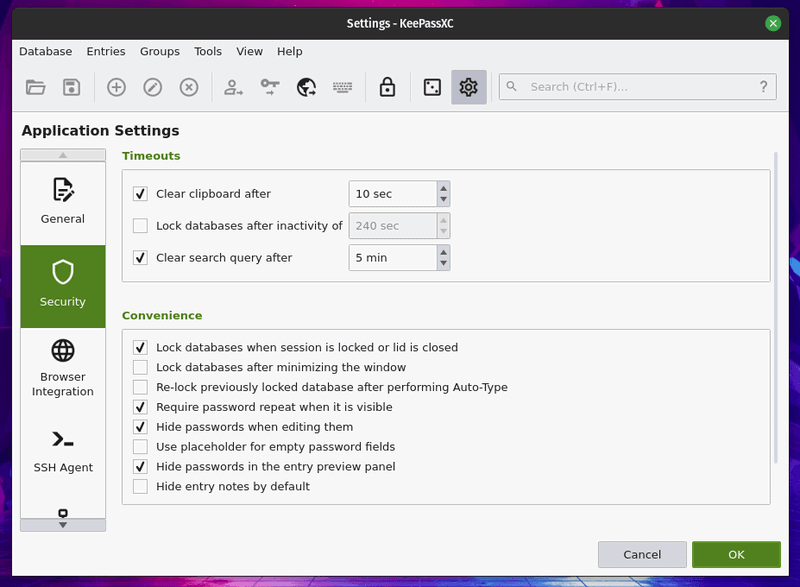
KeePassXC is a community fork of KeePassX which aims to be a cross-platform port for KeePass Password Safe (available for Windows). It is completely free to use and cross-platform as well (Windows, Linux, and macOS)
In fact, it is one of the best password managers for Linux out there. It features options for both newbies and power users who want advanced controls to secure their password database on their system.

Yes, unlike my favorite Bitwarden password manager, KeePassXC is not cloud-based and the passwords never leave the system. Some users do prefer to not save their passwords and secrets in cloud servers.
You should find all the essential features you will ever need on a password manager when you start using it. But, here, to give you a head start, I’ll highlight some features offered.
Features of KeePassXC

It is worth noting that the features might prove to be a little overwhelming for a newbie. But, considering that you want to make the most out of it, I think you should actually know what it offers:
- Password Generator
- Ability to import passwords from 1Password, KeePass 1, and any CSV files
- Easily share databases by exporting and synchronizing with SSL certificate support
- Database Encryption supported (256 bit AES)
- Browser Integration Available (optional)
- Ability to search for your credentials
- Auto-type passwords into applications
- Database reports to check password health and other stats
- Supports exporting to CSV and HTML
- 2-factor authentication token support
- Attach files to passwords
- YubiKey support
- Command line option available
- SSH Agent integration available
- Change encryption algorithms if required
- Ability to use DuckDuckGO to download the website icons
- Database auto-lock timeout
- Ability to clear the clipboard and the search query
- Auto-file save
- Folder/Nested Folder support
- Set expiration of a credential
- Dark theme available
- Cross-platform support
As you can observe, it is a feature-rich password manager indeed. So, I’d advise you to properly explore it if you want to utilize every option present.

Installing KeePassXC on Linux
You should find it listed in your software center of the distribution you’ve installed.
You can also get the AppImage file from the official website. I’d suggest you to check out our guide on using AppImage files in Linux if you didn’t know already.
In either case, you will also find a snap available for it. In addition to that, you also get an Ubuntu PPA, Debian package, Fedora package, and Arch package.
If you’re curious, you can just explore the official download page for the available packages and check out their GitHub page for the source code as well.
Wrapping Up
If you’re not a fan of cloud-based open-source password managers like Bitwarden, KeePassXC should be an excellent choice for you.
The number of options that you get here lets you keep your password secure and easy to maintain across multiple platforms. Even though you don’t have an “official” mobile app from the developer team, you may try some of their recommended apps which are compatible with the database and offer the same functionalities.
Have you tried KeePassXC yet? What do you prefer using as your password manager? Let me know your thoughts in the comments below.

